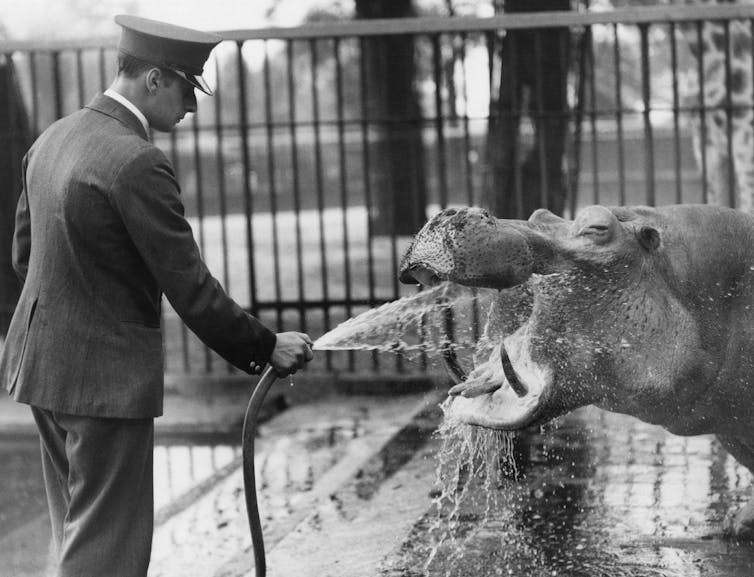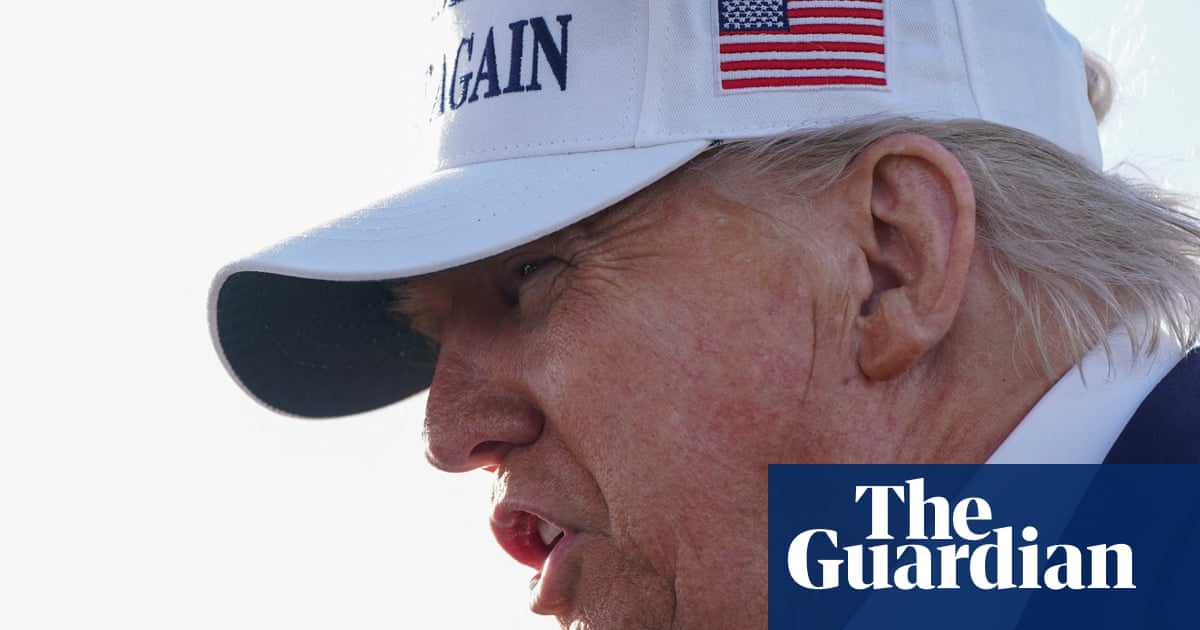President Donald Trump’s sweeping range of more than 130 executive orders and other decisions aim to upend everything from long-standing immigration policy to the control of a performing arts center.
But so far, zoos are not among the many issues the Trump administration has focused on.
That might no longer be the case.
Trump issued an executive order on March 27, 2025, to restore “truth and sanity” at federal history sites.
“Over the past decade, Americans have witnessed a concerted and widespread effort to rewrite our Nation’s history,” Trump wrote in the executive order, “replacing facts with a distorted narrative driven by ideology rather than truth.” As a corrective, he instructed Vice President JD Vance to ferret out “improper ideology” at the Smithsonian Institution, a group of museums and research centers created and funded by the federal government.
The executive order also applied to the National Zoo in Washington, D.C., which has been part of the Smithsonian since 1890.
For Trump’s critics, the suggestion that zoos might be indoctrinating visitors was absurd.
NBC “Late Night” host Seth Meyers joked about the executive order on his show on April 2, characterizing it as evidence of an authoritarian personality.
“Seriously, what the hell is ‘improper’ ideology at the zoo? Trump is starting to get into weird dictator s—,” Meyers said.
Meyers’ astonishment should come as no surprise. Zoos go to great lengths to portray themselves as scientifically objective and politically neutral.
Yet as a scholar of wars’ effects on American culture and society, I know that zoos have always been ideological, sending subtle – and not so subtle – messages about topics that have little to do with animals.
Historically, zoos have been used to justify colonial exploitation. They have lent weight to eugenicist ideas about racial hierarchy. And they have served as backdrops for all kinds of political theater.
During the 1920s and 1930s, for example, Italian strongman Benito Mussolini liked to climb inside the lion cage at the Rome Zoo to demonstrate the courage and vitality he associated with fascist politics.
As I argue in my 2025 book “World War Zoos: Humans and Other Animals in the Deadliest Conflict of the Modern Age,” the links between zoos and national politics are especially pronounced in periods of war.
World war zoos
Zoo ownership and funding models depend on the individual zoo, but many zoos receive at least some government funding to operate.
At the start of World War II, most governments required zoos to embrace an ideology of sacrifice – a willingness to set the needs of the state above their own.
For zoos in North America and the British Empire, this meant slashing workers’ pay, rationing food supplies and offering uniformed soldiers special access to zoo facilities.
It also meant destroying animals considered a threat to public safety, especially in the event of a bombing or assault that could set them free. In 1939, the London Zoo killed more than 200 animals, starting with the black widow spiders and venomous snakes. Other zoos did the same, slaughtering their animal collections as a precaution against possible escape.

Authoritarian governments during World War II exercised almost total control over their nations’ zoos.
Under Adolf Hitler, German zoos enforced “Aryan-only” visitation policies, festooned their grounds with swastikas, hosted galas for Nazi dignitaries and exhibited animals looted from zoos in occupied nations.
In Japan, the governor of Tokyo ordered the Ueno Zoo to carry out a series of “propaganda killings” aimed at strengthening public commitment to the wartime struggle. Starting in August 1943, zoo staff shot, electrocuted, stabbed and strangled more than 20 animals, including a polar bear, an American bison, a python and a leopard cub.
Tokyo’s zoo also starved to death three elephants named Jon, Tonki and Hanako. Weeks after the zoo held an official funeral for its animals, two of the three elephants that were not actually dead continued to suffer, their cages covered in bunting so the public would not see the ghastly evidence.
Even as the fighting raged, the Soviet government directed its zoos to develop practical measures to help the war effort. At the Moscow Zoo, staff taught people how to breed mice and rabbits for medical applications, such as vaccine testing.
All the while, Soviet zoo employees had to demonstrate ideological vigilance in the workplace. Any slipup could mean official sanction, loss of position or worse.
Cold War zoos
During the Cold War, governments around the world continued to view zoos through an ideological lens.
This was especially true in Berlin, where the city’s two zoos – one in the capitalist West, the other in the communist East – became symbols of competing ideological worldviews.
No zoo animals were more ideologically fraught in the Cold War than giant pandas, endemic to the forested mountains of central China.
In the 1950s and 1960s, American zoos were denied permission by the U.S. government to import pandas from China. The State Department considered them “enemy goods.”
That changed in 1972, when President Richard Nixon, during a thawing of the Cold War, famously returned from China with Ling-Ling and Hsing-Hsing, the first giant pandas who were gifted to and exhibited in the U.S. in decades.
The National Zoo unveiled China’s latest “soft power ambassadors” in January 2025. Three-year-old pandas Bao Li and Qing Bao are set to remain in D.C. for 10 years – long enough to win the hearts and minds of millions of zoo visitors.

 German (DE)
German (DE)  English (US)
English (US)  Spanish (ES)
Spanish (ES)  French (FR)
French (FR)  Hindi (IN)
Hindi (IN)  Italian (IT)
Italian (IT)  Russian (RU)
Russian (RU)  3 weeks ago
3 weeks ago
























Comments